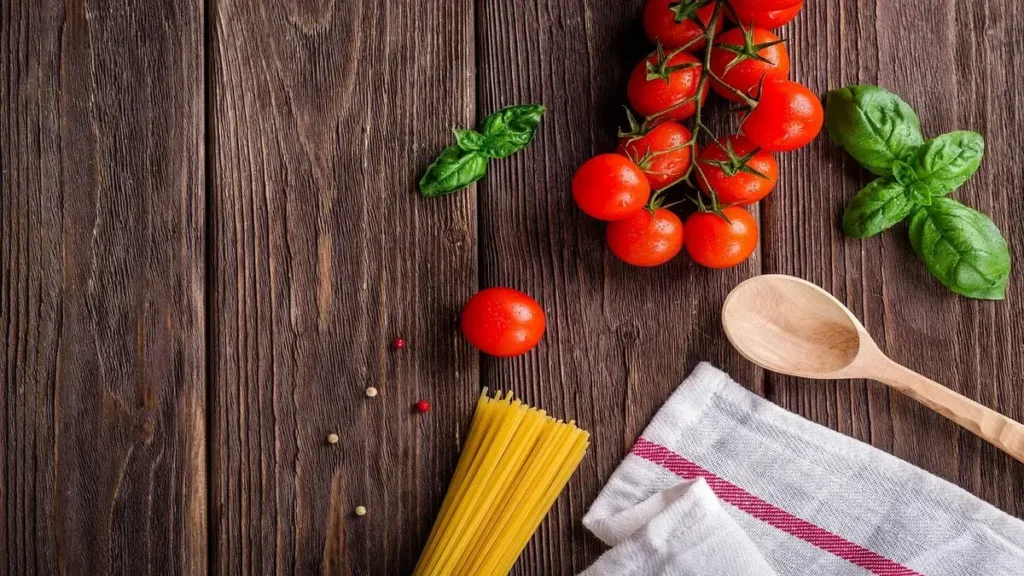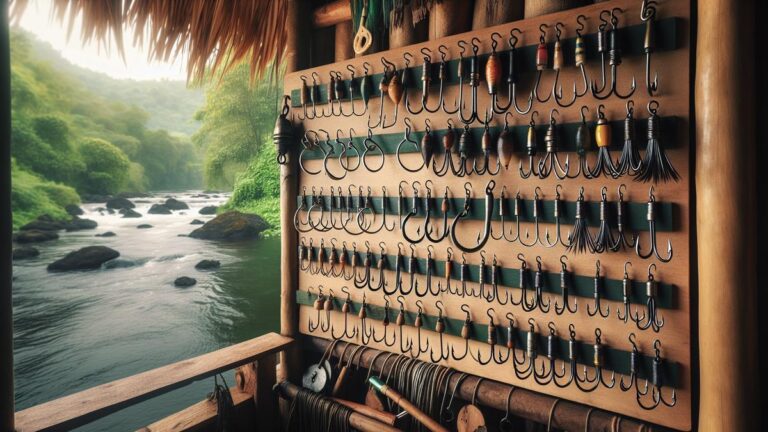The Secrets of Molecular Gastronomy
Molecular Gastronomy is a fascinating and innovative approach to cooking that has been transforming the culinary arts in recent years. By exploring the science behind molecular gastronomy, chefs are able to create dishes using cutting-edge techniques and ingredients that defy traditional cooking methods. From foams to spherification, the innovative techniques in molecular gastronomy have captivated food enthusiasts and professionals alike, opening up a world of possibilities in the kitchen. Let’s dive into the secrets of molecular gastronomy and uncover the amazing ways it is revolutionizing the way we think about food and cooking.
Key Takeway
- Understand the science behind cooking
- Experiment with different textures and flavors
- Use tools like liquid nitrogen and sous vide for innovative dishes
- Combine art and science to create visually stunning meals
- Embrace creativity and think outside the box in the kitchen

The Science Behind Molecular Gastronomy
Molecular Gastronomy is a culinary discipline that combines science and art to create innovative and unique dishes. It explores the chemical and physical transformations that occur during cooking, and uses this knowledge to push the boundaries of traditional cooking techniques. Let’s dive into the fascinating science behind Molecular Gastronomy.
The Basics of Molecular Gastronomy
Molecular Gastronomy is all about understanding the scientific principles behind cooking. It involves studying the chemical reactions that take place when food is cooked, and using this knowledge to create new textures, flavors, and presentations. By manipulating ingredients and techniques, chefs can transform ordinary dishes into extraordinary culinary experiences.
One of the key concepts in Molecular Gastronomy is the use of modern tools and ingredients. Chefs often employ techniques such as spherification, foams, and gels to create visually stunning and flavorful dishes. These techniques allow for precise control over texture and presentation, resulting in dishes that are both visually appealing and delicious.
The Role of Chemistry
Chemistry plays a crucial role in Molecular Gastronomy. By understanding the chemical reactions that occur during cooking, chefs can manipulate ingredients to create new textures and flavors. For example, the Maillard reaction, which is the browning of proteins and sugars, is responsible for creating complex flavors and aromas in many dishes.
Another important chemical process in Molecular Gastronomy is emulsification. Emulsions are mixtures of two or more immiscible substances, such as oil and water. By creating stable emulsions, chefs can achieve unique textures and mouthfeel in their dishes.
The Physics of Molecular Gastronomy
Physics also plays a significant role in Molecular Gastronomy. For instance, the process of sous vide cooking involves cooking food in a vacuum-sealed bag at a precise temperature for an extended period. This technique utilizes the principles of heat transfer and thermodynamics to achieve perfectly cooked and tender results.
Another example is the use of liquid nitrogen in Molecular Gastronomy. Liquid nitrogen has a temperature of around -196 degrees Celsius (-321 degrees Fahrenheit), and when it comes into contact with food, it rapidly freezes it. This technique, known as flash freezing, can be used to create unique textures and presentations.
The Art of Molecular Gastronomy
While Molecular Gastronomy is rooted in science, it is also an art form. Chefs use their creativity and imagination to transform scientific principles into visually stunning and delicious dishes. They experiment with different combinations of flavors, textures, and presentations to create memorable dining experiences.
Molecular Gastronomy has revolutionized the culinary world, pushing the boundaries of what is possible in the kitchen. It has opened up a whole new world of possibilities for chefs and food enthusiasts alike. Whether you’re a fan of traditional cooking or eager to explore the cutting-edge techniques of Molecular Gastronomy, there’s no denying the impact it has had on the culinary landscape.
Molecular Gastronomy is a fascinating blend of science and art. By understanding the chemical and physical transformations that occur during cooking, chefs can create innovative and unique dishes. Whether you’re a food lover or a chef, exploring the world of Molecular Gastronomy can be a truly rewarding experience.
How Molecular Gastronomy is Transforming Culinary Arts
Molecular Gastronomy, a scientific approach to cooking, has revolutionized the culinary world in recent years. By combining chemistry, physics, and culinary arts, this innovative technique has transformed the way we think about food and the way chefs create their masterpieces.
Molecular Gastronomy focuses on the chemical and physical processes that occur during cooking. It explores the properties of ingredients and how they react to different cooking methods, temperatures, and combinations. This scientific approach allows chefs to create dishes that are not only visually stunning but also have unique textures and flavors.
One of the key techniques used in Molecular Gastronomy is spherification. This process involves transforming liquids into spheres that burst with flavor when eaten. By using a combination of sodium alginate and calcium chloride, chefs can create delicate spheres filled with anything from fruit juice to soup. These edible spheres add an element of surprise and excitement to a dish.
Emulsification is another technique commonly used in Molecular Gastronomy. By combining ingredients that would not normally mix, such as oil and water, chefs can create stable emulsions with unique textures. This allows for the creation of foams, gels, and other interesting textures that enhance the overall dining experience.
One of the most visually striking aspects of Molecular Gastronomy is the use of liquid nitrogen. Chefs use this extremely cold substance to freeze ingredients instantly, creating frozen treats with a smooth and creamy texture. The use of liquid nitrogen also allows for the creation of unique presentations, such as frozen cocktails or nitrogen-infused desserts.
Molecular Gastronomy has also influenced the way chefs approach traditional cooking methods. By understanding the science behind cooking, chefs can make more informed decisions about temperature, cooking times, and ingredient combinations. This knowledge allows for greater precision and control, resulting in dishes that are cooked to perfection.
While Molecular Gastronomy has gained popularity in high-end restaurants, its principles can be applied in home kitchens as well. By experimenting with different techniques and ingredients, home cooks can create dishes that are not only delicious but also visually stunning.
However, it is important to note that Molecular Gastronomy is not without its critics. Some argue that the focus on science and technique takes away from the traditional aspects of cooking, such as the use of fresh, seasonal ingredients and the importance of taste. Others argue that the use of chemicals and additives in Molecular Gastronomy raises concerns about food safety and health.
Despite the controversy, there is no denying the impact that Molecular Gastronomy has had on the culinary world. It has pushed the boundaries of what is possible in the kitchen and has inspired chefs to think outside the box. Whether you are a professional chef or a home cook, Molecular Gastronomy offers a new way to explore the art of cooking and create unforgettable dining experiences.

Innovative Techniques in Molecular Gastronomy
Molecular Gastronomy is a culinary discipline that combines science and art to create unique and innovative dishes. Chefs who practice this technique use various scientific principles and tools to transform traditional ingredients into extraordinary culinary creations. In this article, we will explore some of the most fascinating techniques used in Molecular Gastronomy.
Spherification
Spherification is a technique that involves transforming liquids into spheres or spheres with a liquid center. This technique is achieved by using sodium alginate and calcium chloride. The liquid is mixed with sodium alginate to create a gel-like substance, and then it is dropped into a calcium chloride bath. The calcium ions react with the sodium alginate, forming a thin gel membrane around the liquid, creating a delicate and visually stunning sphere.
Spherification is a popular technique in Molecular Gastronomy as it allows chefs to play with textures and flavors in a unique way. It is often used to create caviar-like spheres or to add a burst of flavor to a dish.
Foams
Foams are another innovative technique used in Molecular Gastronomy. By using a whipping siphon or an immersion blender, chefs can transform liquids into light and airy foams. This technique is achieved by incorporating air into the liquid, creating tiny bubbles that give the foam its texture.
Foams can be made from a variety of ingredients, such as fruits, vegetables, or even savory components like cheese or bacon. They add a playful and visually appealing element to a dish, while also enhancing the overall flavor and texture.
Gelification
Gelification is a technique used to create gels or gel-like textures in Molecular Gastronomy. This technique is achieved by using gelling agents such as agar-agar or gelatin. These agents are added to a liquid and then heated to activate their gelling properties.
Gelification allows chefs to create unique textures and shapes that would not be possible with traditional cooking methods. It is often used to create gel cubes, sheets, or even intricate designs that add both visual and textural interest to a dish.
Deconstruction
Deconstruction is a technique that involves breaking down a traditional dish into its individual components and presenting them in a new and unexpected way. This technique allows chefs to play with flavors, textures, and presentations, creating a completely different dining experience.
Deconstruction is a popular technique in Molecular Gastronomy as it challenges the norms of traditional cooking and encourages chefs to think outside the box. It allows for creativity and experimentation, resulting in dishes that are both visually stunning and delicious.
Conclusion
Molecular Gastronomy is a fascinating culinary discipline that pushes the boundaries of traditional cooking. By incorporating scientific principles and innovative techniques, chefs are able to create dishes that are not only visually stunning but also incredibly flavorful. Whether it’s through spherification, foams, gelification, or deconstruction, Molecular Gastronomy continues to revolutionize the culinary world and provide diners with a truly unique dining experience.
Frequently asked questions
What is molecular gastronomy?
Molecular gastronomy is a scientific approach to cooking that involves the study of the physical and chemical processes that occur while cooking. It’s all about experimenting with new techniques and ingredients to create innovative and mind-blowing dishes.
How does molecular gastronomy differ from traditional cooking?
Molecular gastronomy focuses on the science behind cooking, using technology and modern equipment to manipulate ingredients in ways that traditional cooking methods cannot. It’s all about pushing the boundaries and creating unconventional dining experiences.
Is molecular gastronomy only for professional chefs?
No, molecular gastronomy can be enjoyed and experimented with by home cooks as well. There are plenty of simple techniques and recipes that can be tried out in your own kitchen, allowing anyone to unleash their inner food scientist.
What are some common techniques used in molecular gastronomy?
Some popular techniques include spherification, foaming, and gelification. These techniques involve transforming ingredients into unexpected textures and forms, resulting in visually stunning and delicious dishes.
Is molecular gastronomy safe to consume?
Yes, the techniques and ingredients used in molecular gastronomy are safe to consume when prepared and handled correctly. Chefs and home cooks alike take great care to ensure that all dishes are not only visually appealing but also safe to eat.
Can I incorporate molecular gastronomy into my restaurant menu?
Absolutely! Many restaurants around the world have successfully incorporated elements of molecular gastronomy into their menus, delighting diners with innovative and captivating dishes. It’s a great way to set your restaurant apart and create a memorable dining experience.
Where can I learn more about molecular gastronomy?
There are plenty of resources available online, including books, videos, and courses, that can help you dive into the world of molecular gastronomy. Whether you’re a curious food enthusiast or a professional chef, there’s always something new and exciting to discover in this fascinating culinary field.

Este artigo foi criado pela nossa avançada ferramenta de criação de conteúdo. Quer produzir conteúdos de alta qualidade semelhantes sem esforço? Adquira nossa ferramenta hoje mesmo no Automatik Blog.







